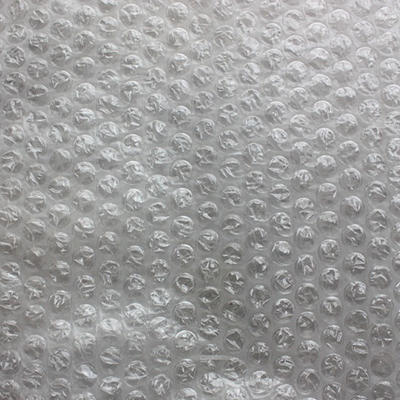Transportation

How a shoe gets from Point A to Point B is important. Thanks to globalisation, production and purchase can now occur on opposite sides of the planet. We’ve summarised how transportation and sourcing choices could be improved to promote sustainable and ethical business practices across the footwear industry.
Globalisation
Globalisation has led to a movement of manufacturing overseas. An increasing demand for low-cost clothing puts pressure on manufacturers to reduce their costs to meet the demands of big retailers. Generally speaking, this is done by outsourcing manufacturing to other countries where there are lower health & safety considerations e.g. exposure to harmful chemicals, long hours of repetitive motion, and structural neglect of factory buildings. (We covered the lack of H&S here when discussing the problems with manufacture.)
For this reason, Asia is the popular choice when outsourcing manufacture; 88% of global footwear production happens in this continent. [1] Due to this, Asian countries like China have a low average export price of $4.44 per pair of shoes. This is in comparison to European countries who are able to command much higher average export prices of $50.92 (Italy) or $31.88 (Portugal). [1]
Higher prices can indicate fair and humane operations - and there are more than a few examples around the globe.
AVERAGE EXPORT PRICE PER PAIR OF SHOES FROM CHINA (IN 2014)
Localism
Following decades of shoe production growth in the Far East in line with globalisation, Asia remains the largest shoe producer with a whooping 87% production stake globally (according to World Footwear Yearbook 2022). However, there has been a noticeable shift in recent years towards nearshoring production both in Europe and North America. There are several reasons behind the initial relocation strategy, namely to mitigate supply chain vulnerabilities (both in consequence of climate change and geopolitical issues), allow for tighter control to future-proof against evolving legislations, as well as achieving greater speed to market.
Nearshoring is made possible economically by the advancement of automation capabilities and other technologies such as 3DTI.
The other positive consequential aspects of localising production are reductions in carbon footprint (due to transport savings as well as an easier transition to renewable energy usage), producing in countries with higher environmental standards and higher health and safety standards, mitigate overproduction and excess inventory, while boosting local economies.
A couple of localising production examples are Salomon who started their first highly automated shoe factory in France in 2021, and Oregon’s ‘Made in Old Town’ initiative to repurpose nine buildings across four city blocks in Portland’s Old Town neighbourhood, transforming vacant or underutilized historic buildings into a campus for sustainable footwear and sportswear production.
British shoe designer Nicholas Kirkwood is attempting to take a step further with a vision to localise the entire supply chain in the UK by producing shoes right next to hemp fields which will provide the main raw material.
Packaging
How a product is wrapped up for the customer is also key. The main purpose of packaging is to protect the contents from damage between factory and user. There is however, some room for improvement:
Material selection needs considering
Are traditional cardboard shoe boxes the best option? Or do better alternatives exist?
Yes, we like to keep a hold of shoe boxes and repurpose them for storage - but many sit forgotten at the back of our wardrobes. Wouldn’t it be better to use less energy intensive methods, like take-back schemes or materials that naturally biodegrade?
Also, silica gel sachets are often used inside shoe boxes and might contain cobalt dichloride, which is a known carcinogen.
Unnecessary quantities of materials are used
Shoes often come stuffed and wrapped in paper, before being placed inside the cardboard shoe box, with additional paper providing the customer with information on the brand and the product. Depending on how the shoe was bought, there may be a plastic bag or padded envelope too.
What proportion of these materials are actually required? Does it serve a worthwhile purpose that justifies spending time, money and energy?
These questions and answers need evaluating. Tools and exercises like the LiDS wheel help assess different aspects of a product's lifespan. PUMA's clever little bag scheme created a reduction of 20 million megajoules of electricity, 1 million liters of water, 500,000 liters of diesel fuel, and 8,500 tons of paper per year. Not only are those environmentally sustainable changes, but economic too. Viupax is a sustainable shoebox company, claiming to use 20-57% less cardboard and 20-50% less volume.
Solutions
Use our list of sustainable / ethical brands as a starting point and a benchmark for brand transparency, and aim to improve upon them.
Avoid air freight for bulk shipments (to save on carbon emissions as well as cost).
Use low-emission couriers where possible - favour providers with electric vehicles and bicycles in cities.
If you must use mailers, make them plastic free - there are bio-based and biodegradable options that still provide sufficient protection.
Take a look at a few sustainable design strategies and implement them in your packaging. This could be through reducing the amount of cardboard used, ensuring its either fully recycled or FSC certified, avoiding glue, eliminating unnecessary paper and / or minimising the amount of printed information. Can the box be usefully repurposed perhaps (apart from just storage)?
Calculate the carbon footprint for your product and make changes to reduce it.










